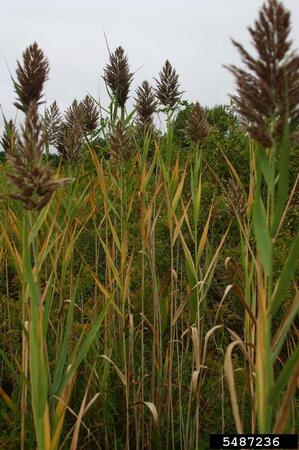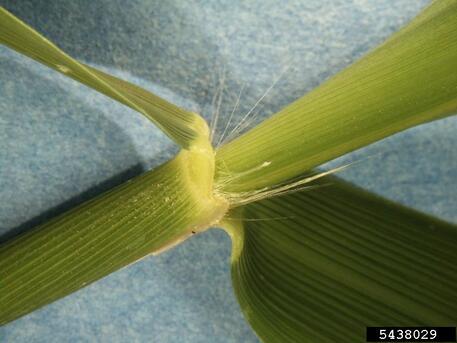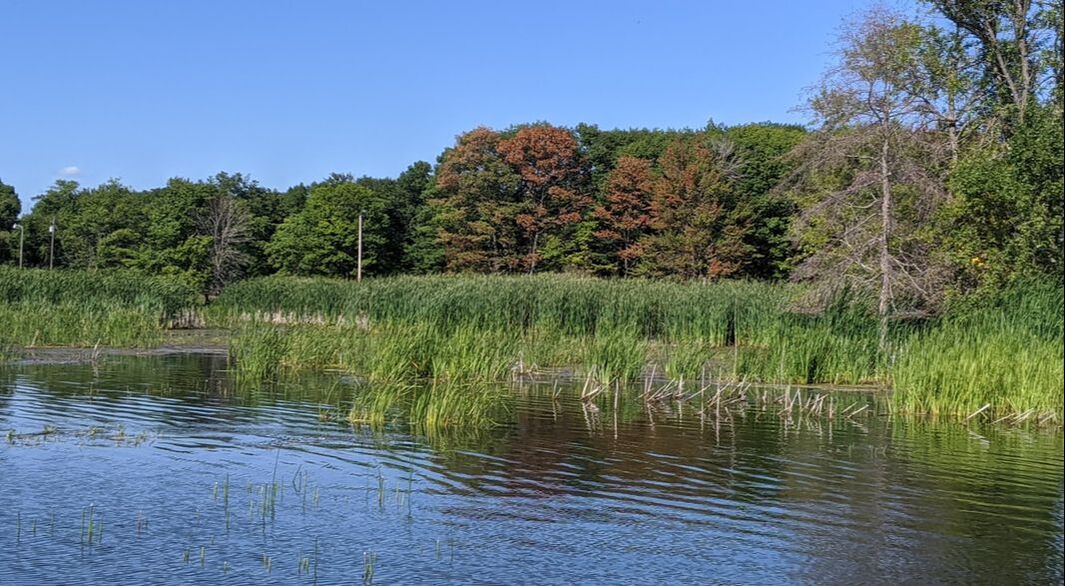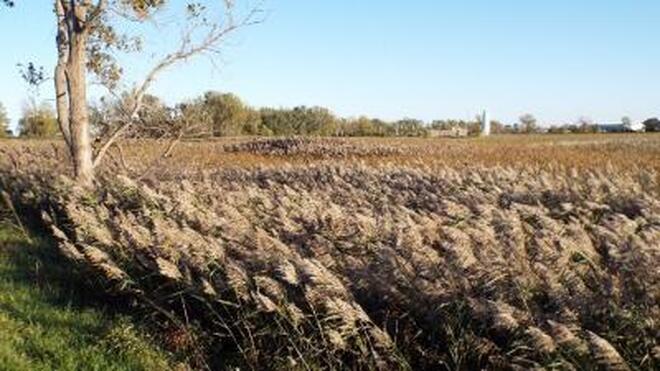Phragmites is a perennial wetland grass that grows up to 15 feet in height. While Phragmites australis americanus is native to Michigan, an invasive variety of phragmites called Phragmites australis australis is becoming widespread and is threatening the ecological health of wetlands and the Great Lakes coastal shoreline. Phragmites is the most common invasive plant in Saginaw Bay. High nutrient outputs from agricultural and residential runoff make the bay a perfect host to Phragmites infestations. These large infestations create tall, dense stands which degrade wetlands and coastal areas by crowding out native plants and animals, blocking shoreline views, reducing access for swimming, fishing, and hunting and creating fire hazards from dry plant material. Large infestations can dry up marshes, and alter the water and soil regimes.
For a list of contractors treating Phragmites in Michigan, click here.
For a list of contractors treating Phragmites in Michigan, click here.
 Thick monoculture stands block access to the shoreline and impede recreation.
Photo: Leslie Mehrhoff, University of Connecticut, Bugwood.org
Thick monoculture stands block access to the shoreline and impede recreation.
Photo: Leslie Mehrhoff, University of Connecticut, Bugwood.org
Identification
- Perennial grass with a rigid, hollow stem.
- Thick stalks range in height from 6 to 15 ft.
- Stems are upright, rigid and hollow.
- Leaves sheaths are flat and smooth with hairy ligules where the leaf meets the stem.
- Leaf sheaths stay attached to stem throughout the winter.
- Flowers grow as dense branched clusters on the end of each stems.
- Flowers are purple and feathery in late summer.
- Dull, tan stems persist in winter.
 Hairy ligules occur where the sheath-like leaves attach to the stalks.
Photo: Bruce Ackley, The Ohio State University, Bugwood.org
Hairy ligules occur where the sheath-like leaves attach to the stalks.
Photo: Bruce Ackley, The Ohio State University, Bugwood.org
Habitat: Phragmites is found growing in coastal and interior marshes, bogs, fens, swamps, lake margins, roadside ditches and other low wet areas. Typically it prefers the wetland-upland interface, though it can be found in dry uplands.
Additional Resources:
Great Lakes Phragmites Collaborative
Michigan Department of Environment, Great Lakes and Energy
A Landowner's Guide to Controlling Phragmites
Invasive Phragmites - Best Management Practices
Michigan Natural Features Index
Michigan Invasive Species Website
MISIN Species Training Module
Additional Resources:
Great Lakes Phragmites Collaborative
Michigan Department of Environment, Great Lakes and Energy
A Landowner's Guide to Controlling Phragmites
Invasive Phragmites - Best Management Practices
Michigan Natural Features Index
Michigan Invasive Species Website
MISIN Species Training Module
Banner credit: John M. Randall, The Nature Conservancy, Bugwood.org


